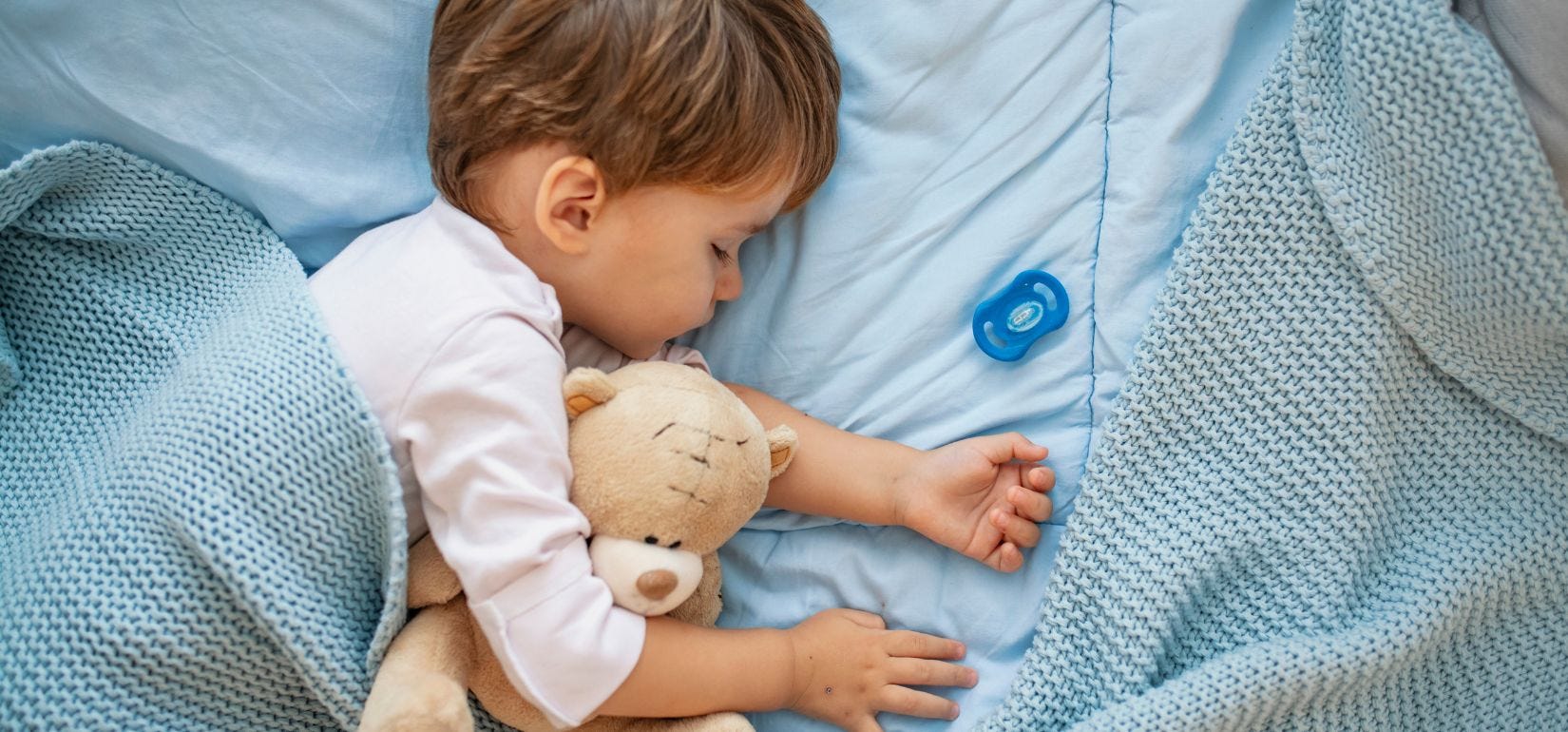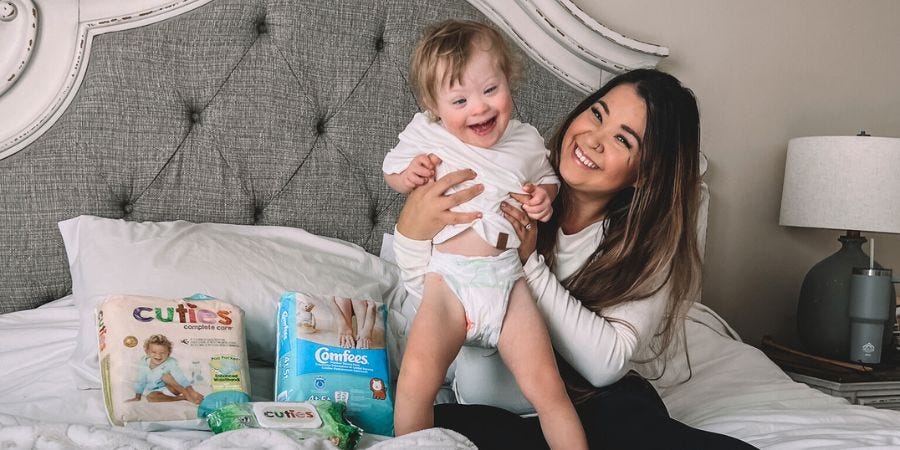After giving birth, it’s hard to focus on anything besides your newborn. They need someone to feed them, rock them to sleep, and they’re just so darn cute!
With so much distracting you, you may not notice how much your body is actually changing post-delivery. As your body heals from the trauma of childbirth, you may experience minor bladder leaks, uterine bleeding, and other types of incontinence that don’t seem to get better.
If you are one of the many women managing postpartum incontinence, try not to worry! There are several ways to manage and treat your urinary incontinence easily as your body recovers from giving birth.
What Causes Postpartum Incontinence?
The miracle of childbirth can do strange things to your body. As your body prepares for birth, your organs adjust, and more pressure is placed on your bladder and pelvic floor muscles, which can cause them to weaken throughout pregnancy. Your hip joints loosen and your cervix stretches.
Check Your Eligibility
2 Easy Steps
Discover the continence care essentials available through your Medicaid plan.
As your baby passes through the vaginal canal during childbirth, your pelvic muscles, bones, and ligaments stretch. Although many say it takes six weeks to recover after giving birth, it can actually take six to 12 months for your body to fully recover.
During those six to 12 months of recovery, your body continues to experience hormonal changes that affect your bladder. As your uterus contracts back to its original size, it can place extra pressure on your bladder.
All of this pressure and stretching before, during, and after childbirth means your weakened pelvic muscles may be unable to contract to hold or stop urine from leaking. As a result, you may experience urine leakage when you lift something heavy, sneeze, laugh, or exercise.
Postpartum incontinence is also known as stress urinary incontinence (SUI), as leakage occurs when the bladder is “stressed.” It is prevalent, affecting about seven million new mothers in the US. Even low-stress deliveries and c-sections (cesarean sections) lead to incontinence in up to 50% of women. But remember, just because something is common does not mean it is normal.
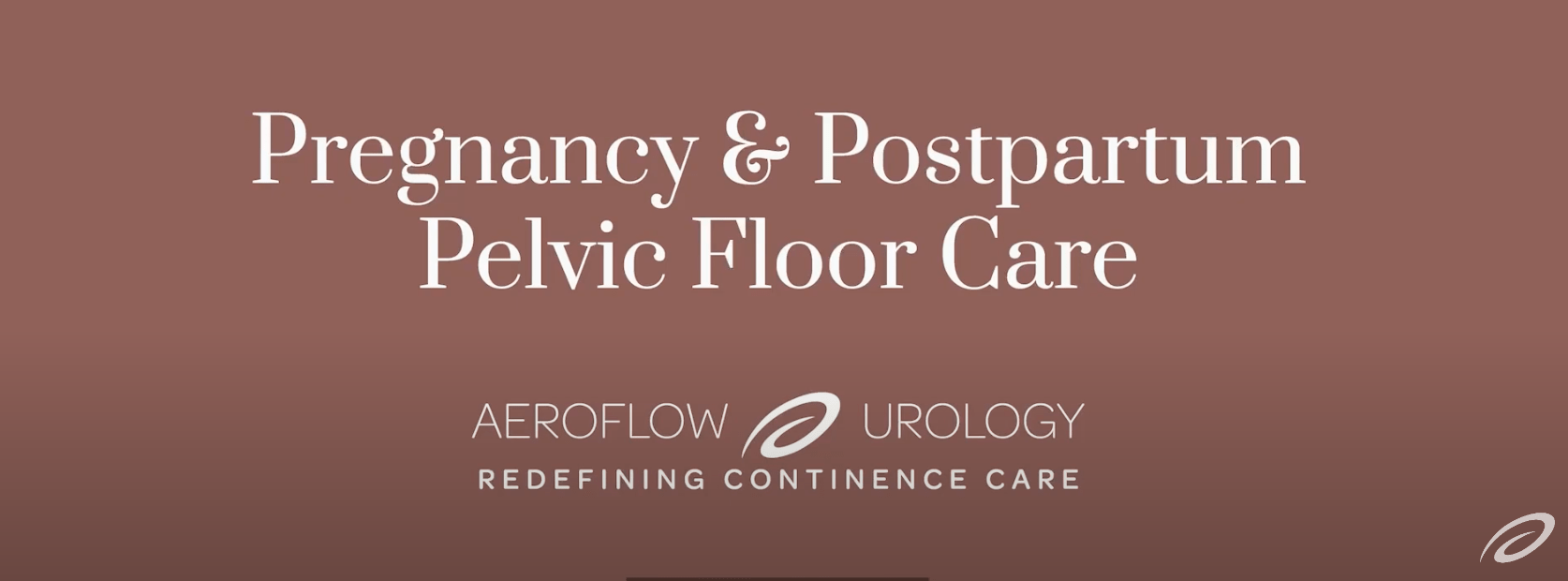
6 Ways to Manage Postpartum Incontinence
Several SUI treatment options can help you regain control of your bladder, but in some cases, it may take up to six months or longer to fully recover. However, you don’t have to spend that entire time worrying about bladder leakage. Here are six ways to manage your postpartum incontinence.
1. Bladder Control Pads
Bladder control pads are discreet incontinence supplies used to absorb urine leakage. Instead of wearing bulky briefs, you can use smaller bladder control pads, like Poise pads, to quickly absorb leaks. Bladder control pads are very similar to menstrual pads, making them easy to change and carry.
On top of having high-quality bladder control products, you don’t have to worry about the cost of these items, as they may be covered through insurance with Aeroflow Urology! We can provide support for all of your continence care needs; Simply use our quick qualification form to get started, and we will take care of the rest so you can relax as incontinence products are shipped to your home on a monthly basis.
2. Kegel Exercises
When you are physically able, engaging in kegel exercises daily can help strengthen your pelvic floor muscles. You can perform pelvic floor exercises by squeezing your pelvic muscles and holding them for about 10 seconds.
You can even get a personal trainer for your pelvic floor muscles. Pelvic floor physical therapists are trained to specialize in pelvic floor disorders, especially prenatal and postpartum. The American Physical Therapy Association (APTA) is an excellent resource if you are interested in pelvic floor muscle training with a physical therapist.
3. Lifestyle Changes
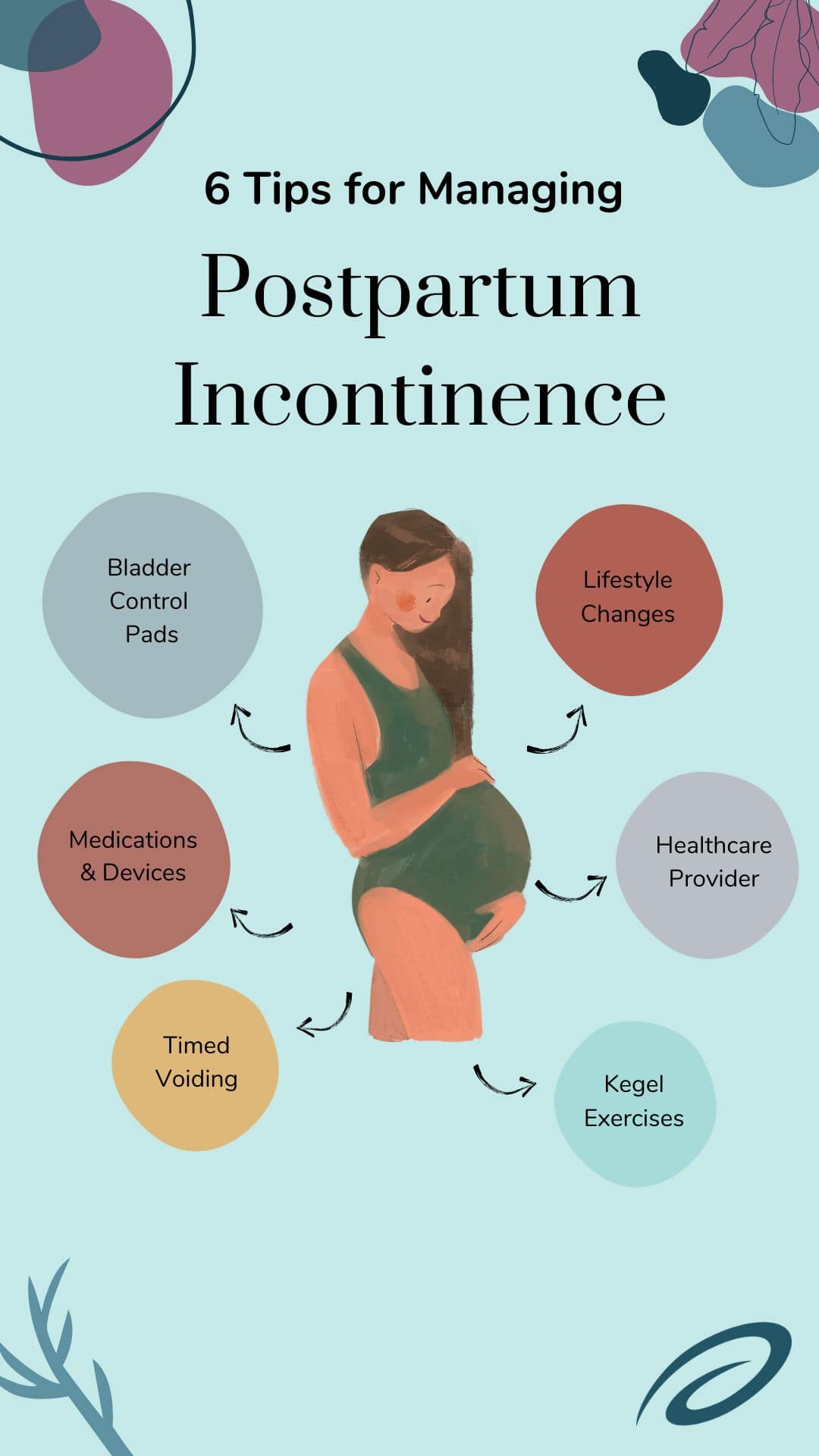

There are lots of small changes you can make to your daily routine to relieve unwanted stress on the bladder:
- Clean up your diet. Eat healthy fruits and vegetables that are full of fiber. Avoid bladder irritants, such as coffee, caffeine, spicy foods, and refined sugar.
- Stay hydrated. Drink at least eight glasses of water a day to avoid urinary tract infections (UTIs) and dehydration.
- Keep weight within a healthy normal. We aren’t suggesting you lose all of your baby weight right after you give birth, but trying to return to a healthy weight, whatever that may look like for you. This is another way to relieve pressure on the bladder.
- Limit abdominal pressure. By limiting pressure on your abdomen, you can also lessen the pressure on your bladder. This can decrease the amount of “stress” on the bladder which can help prevent leakage.
- Avoid nicotine. Nicotine directly affects the muscles and lining of the bladder, and chronic coughing from smoking cigarettes can cause increased stress on the bladder, which can prolong the prevalence of incontinence symptoms.
4. Timed Voiding
Typically, using the restroom every two to three hours is considered normal. If you have to go frequently, you can try bladder training techniques to gain back the proper function of your bladder. Use the bathroom every 30 minutes to an hour, then try to extend the amount of time between urination each day. Emptying your bladder before activities, including exercising, can also help limit leakage.
5. Healthcare Providers
If you have incontinence symptoms, speak with a healthcare professional to rule out more severe conditions and causes to help develop an effective treatment plan. Seeing a pelvic floor physical therapist can also be beneficial and help you to regain the strength of your pelvic floor muscles.
6. Medications & Devices
You may need temporary assistance from incontinence medication or support devices to help relax your bladder and control urine flow. Some devices, such as a pessary, can be placed in the vagina to support the bladder and rectum and help the bladder fully empty. This device can also be used to treat pelvic organ prolapse. Other devices like bladder slings may also be surgically inserted to treat incontinence symptoms.
In the meantime, try not to worry about a little loss of urine. With protective incontinence products, you can continue to enjoy bonding with your baby. After you’ve fully recovered from giving birth, speak with your healthcare provider about your urinary incontinence and begin taking steps to regain control of your bladder.
Managing Incontinence With Baby
If you find yourself wanting to manage your incontinence or improve your pelvic floor after delivery but feel like you just don't have the time with your new baby, try some of these tips.
1. Virtual Pelvic Floor Trainer
Can't leave the house to visit a pelvic floor therapist? Try an online therapist! Telehealth is making a significant impact in the healthcare industry, allowing people to have access to almost any type of appointment online through their computer or phone lenses. Sign up for virtual pelvic floor therapy classes or find a private pelvic floor therapist online. This way, you won't have to take your newborn with you to your appointment or find a babysitter.
2. Sitting Exercises With Baby
Sitting exercises are great to do in the first four to six weeks postpartum. Here's how to do them:
- Sit on an exercise ball with your baby.
- Roll your hips to engage your core and strengthen your hips.
- While holding your baby, squeeze a ball between your knees.
3. Other Exercises With Baby
Sitting exercises aren't all you can do with your baby. You can do these other exercises during the day while your little one is having some tummy time!
- Hip bridges.
- Clamshell exercises.
- Reverse clamshell exercises.
- Modified squats (only after four to six weeks when your uterus is back to its normal size).
- Yoga and stretching.
4. Use Your Baby for Exercise!
Another option is to lay on the ground and hold your baby in your hands and use them as weights for chest-press-type exercises. This may sound odd, but it really works!
5. Join a Support Group
There are many online support groups for new moms and people managing incontinence in local areas. A support group can help you in tough times when you can't get out of the house with your baby.
6. Sit Evenly When Feeding Your Baby
Don’t lean too much to one side or cross your legs when you’re feeding your baby because this can cause core and pelvis concerns. Try to sit on both sides evenly so your core can engage properly.
How Aeroflow Urology Can Help
Aeroflow Urology knows that managing incontinence can be stressful at times, especially if you have a new baby to take care of!
See if you qualify to receive free incontinence supplies, such as bladder pads or adult briefs, by using Aeroflow Urology.
Want to see how it works? Check out the video below.
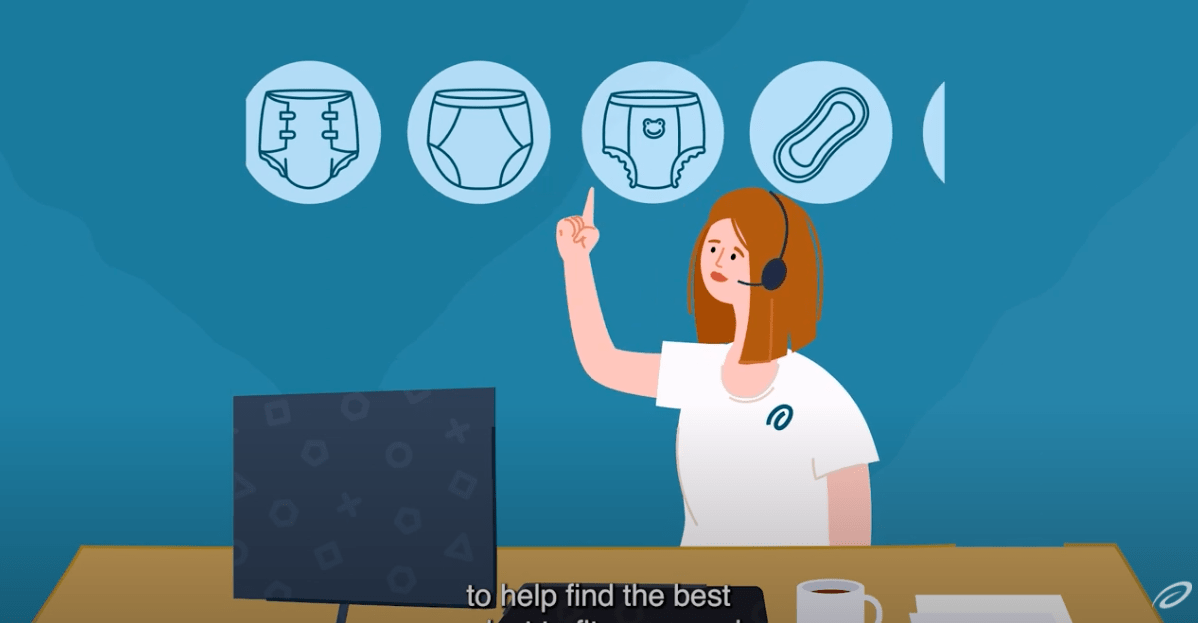
How to Get Incontinence Supplies Through Insurance
Follow these steps to see if you qualify to receive incontinence supplies covered by your insurance.
- Fill out our eligibility form. It takes under five minutes– just have your insurance card at hand.
- If you qualify, one of our Continence Care Specialists will help you find the perfect products for your lifestyle and specific needs.
- Once you choose your supplies, they’ll be shipped to your home in discreet packaging. We send reminders each month, and after you restock, you’ll never have to worry about running out of incontinence supplies again!
Information provided on the Aeroflow Urology blog is not intended as a substitute for medical advice or care from a healthcare professional. Aeroflow recommends consulting your healthcare provider if you are experiencing medical issues relating to incontinence.




